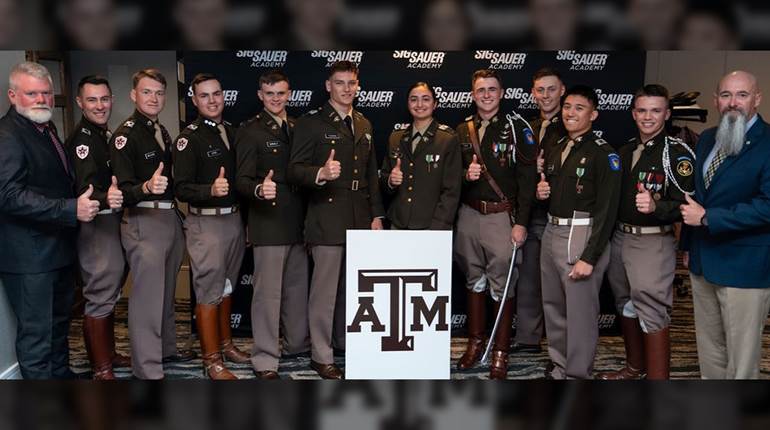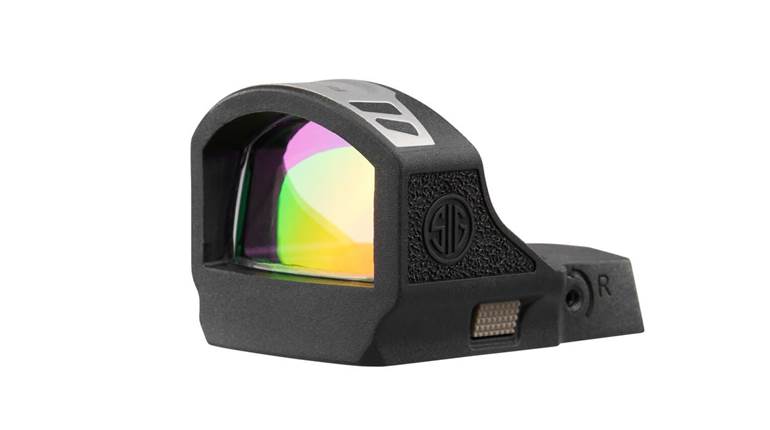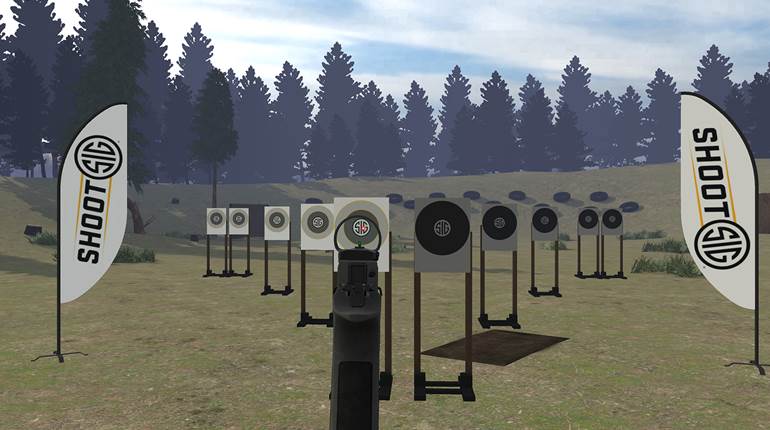
10/11/2012
Efforts to extend the range and improve the shootability of semi-automatic pistols have a long history that pre-dates the SIG Sauer Adaptive Carbine Platform (ACP). Many Lugers, Broomhandle Mausers and Browning Hi Powers had slots to attach a stock. More recently other platforms have appeared, but were generally only suited for one type of pistol. SIG, however, claims that its carbine adaptor, the ACP, is far more versatile. In fact, it will work with a wide variety of semi-auto pistols—virtually anything with a rail on the dustcover.
SIG offers three variants: the ACP-Standard, the ACP-Enhanced and the ACP-LE. The Standard ACP comes with an adaptor and a Quick Disconnect (QD) sling mount. The Enhanced model includes a detachable single-point sling and SIG’s red-dot sight. For most shooting enthusiasts, this variant has perhaps the most potential utility outside of the constraints of an SBR/NFA firearm. The ACP-LE, or the Law Enforcement version, has no sight or sling, but includes a folding wire shoulder stock instead. Sadly, this brings a pistol fitted with the ACP-LE under control of the National Firearms Act (NFA) as a short-barreled rifle. That means the pistol would have to be registered on a Form 1, and the owner would be required to pay a $200 tax stamp.
In order to stay on the right side of the law, a potential ACP-LE owner may need to register and pay a tax stamp for every handgun he or she owns that fits in the ACP apparatus. Needless to say, it is a legal conundrum, and I would advise anyone tempted to pursue that route to solicit and heed the advice of a lawyer well-versed in firearms law.
Briefly described, the ACP is an aluminum housing that clamps to the slide and frame of a semi-automatic pistol. Two sections of integral Picatinny rail, fore and aft, of the large ejection port run along the top of the ACP. The bottom of the ACP that surrounds the dustcover of the pistol has a hand stop and three shorter rail sections at the three-, six- and nine-o’clock positions. A reversible charging handle allows the user to rack the slide. Included with the ACP are a set of locking plates that clamp to the dustcover and backstrap of your chosen pistol.
Beyond the cool factor, why does it exist and what advantages does it offer? The ACP is a way to extend the range and capability of a sidearm, and if you are going to give up on holsterability, you might as well go whole hog with a system like the ACP. A holsterable handgun has limitations on the size, number and power of optical sights, laser sights and weapon lights and other shooting aids that can be attached.
On top of that, pistol shooting has a steep learning curve and those who have yet to master the art of pistol marksmanship may find that the extra bulk helps tame recoil and that a red-dot sight boosts their performance. Along with an inconsistent grip and trigger press, sight alignment errors are a major source of misses and poor hits. And whether you are a Grand Master or a beginner, a red dot offers a more precise aiming point than iron sights. Thus, it can be a big asset when engaging obscured or barricaded targets at longer range.
Whether it is more accurate and easier to control may largely depend on the shooter’s skill. Someone who is a crack shot with a pistol will probably find that that ACP doesn’t do much to extend range or increase hit probability.
There are, however, some training and safety considerations for anyone using the ACP. Incorporating the sling into your shooting stance changes your grip and requires learning a new set of skills. If you are going the use the sling effectively you have to put extra effort into pushing out with your firing hand and pulling back with your support hand.
A big safety issue with any firearm with a short barrel is muzzle consciousness. It is relatively tough to sweep your hand or your body with a carbine, but any firearm with a barrel this short and a grasping surface for the support hand so close to the muzzle, staying safe may require some training, discipline and focus. To help the shooter with this issue, all three ACP models come standard with a hand stop.
The instructional CD that comes with the unit illustrates two main shooting positions for the ACP. The first requires an optic sight, since your irons are hidden underneath the ACP apparatus. The pistol is held in a conventional two-handed grip; both arms extended and both hands wrapped around the grip frame of the pistol. The second requires the use of a laser as an aiming device, where the firing hand grips the pistol grip while the support hand grasps the lower rail. This allows the ACP-equipped pistol to be fired with the heel of the firing hand braced against the chest or waist. Someone forced to defend themselves in cramped quarters in their home might find this stance to be advantageous. In my own experience groups looked about the same. That said, my hit percentage on 20 plus yard targets significantly improved.
According to SIG’s marketing video, “The Adaptive Carbine is unique because it accepts virtually any full-sized pistol.” The video goes on to show an M&P, a railed 1911 and a Glock slipped into the ACP. If you own one of the three mainline SIG pistols (P226, P229, P220) you’re good to go. Deviate from this short list, though, and you may find your pistol doesn’t work. SIG Sauer would do itself a service if they published a list of models known to work with the ACP.
Ergonomically the ACP delivers a mixed bag. Recoil is reduced, but the charging handle is heavy and far from smooth. It is attached to a big block of aluminum with large bearing surface against the ACP’s main body. In my experience, the longer the movement required to rack the slide the greater the drag and binding in the racking stroke. A spring built into the ACP assists returning the slide back into battery. In sum, the draw could be unpredictable, but the slide returned to battery without complaint.
On the other hand, cutouts along the length of the ACP provide decent access to a pistol’s frame-mounted controls such as the thumb safety, de-cocking lever and slide stop release for most pistols. It will, however, require practice to properly manipulate a gun in the ACP, as it will not be the same, and may impede access to slide mounted controls and malfunction clearing.
The ACP works well with the most popular full-size service sidearms, Glock, S&W M&P, FN and of course SIG Sauer. Oversized competition guns, however, are generally too tall to fit without significant modification to the gun or the ACP. Height seems to be the main limitation on compatibility. The higher the bore axis, the taller the slide and the sights and the more likely the gun won’t fit.
Commendably, the ACP fits a lot of pistols, but it doesn’t fit everything. The SIG Sauer P220/P226/229 series pistols with railed dust covers ensure the best performance and compatibility. It may be a boon to some law-enforcement officers whose duties make carrying a shoulder-fired arm awkward. Here, I am thinking of motorcycle, bicycle or horse-mounted officers. Scabbards for all three are available, but they may not be really secure from tampering or theft when the officer is forced to dismount. For the rest of us, it is something neat. Some pistol shooters may find that a large red-dot sight and the extra weight and bulk may enhance their control and improve their confidence. It can be said that nobody needs one, but that doesn’t mean lots of shooting enthusiasts won’t find something to like about it.
Manufacturer: SIG Sauer; www.sigsauer.com
Model: Adaptive Carbine Platform
Length: 13 7/8″
Width: 2 3/4″
Height: 5″
Weight: 17 ozs.
Suggested Retail Price: varies for each model; $369 Standard – $499 Enhanced; $399 LE






































